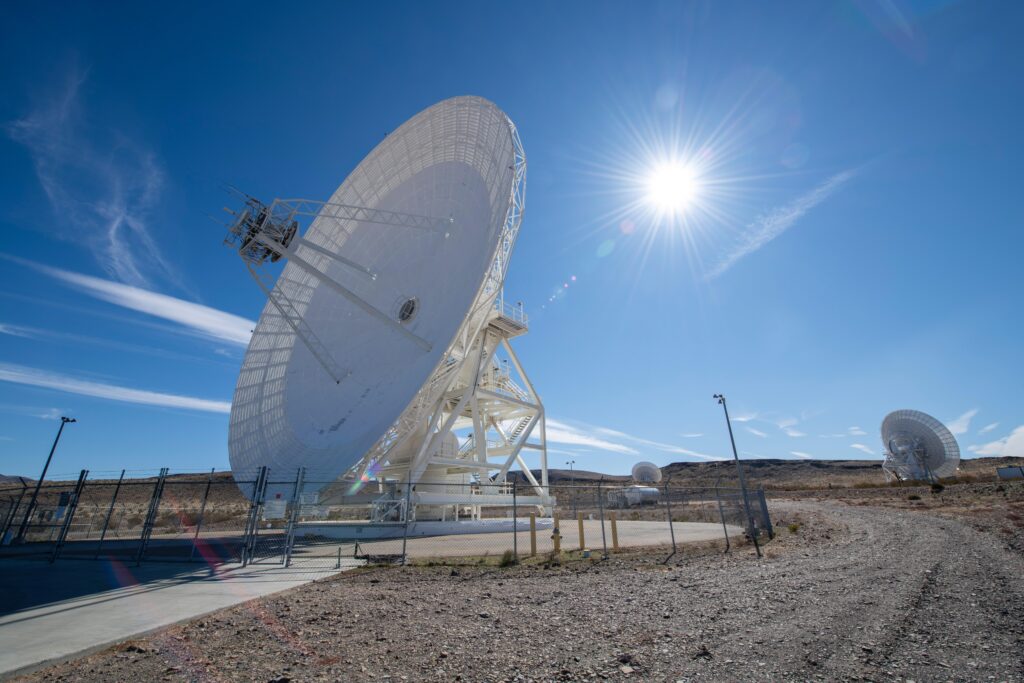“Unlocking Alien Worlds: Telescopes Leading the Charge!”
Title: Exploring the Quest for Alien Life: Telescopes Leading the Way

Introduction: Embarking on the quest to discover alien life beyond our solar system is a journey filled with intrigue and wonder. Scientists are diligently exploring various avenues to detect potential signs of extraterrestrial existence. One promising avenue is through the use of advanced telescopes, particularly the European Extremely Large Telescope (ELT), which holds significant promise in the search for extraterrestrial life within the next two decades. In this article, we delve into the capabilities of the ELT and other groundbreaking telescopes, along with the challenges and possibilities they present in the quest to unravel the mysteries of the cosmos.
The Role of Telescopes in Exoplanet Exploration: Telescopes play a pivotal role in our exploration of exoplanets, which are planets orbiting stars outside our solar system. One crucial method employed by telescopes is the analysis of exoplanetary atmospheres. This involves studying the interactions between starlight and the atmospheres of exoplanets during transits, where planets pass in front of their host stars as viewed from Earth.
The James Webb Space Telescope (JWST) utilizes transit spectroscopy to analyze exoplanetary atmospheres. By observing how starlight filters through exoplanet atmospheres during transits, scientists can detect the presence of specific molecules, such as methane and carbon dioxide, which may indicate the presence of life-friendly conditions.
 Challenges and Opportunities in Exoplanet Research: While transit spectroscopy offers valuable insights into exoplanetary atmospheres, it has limitations. Only a small fraction of exoplanets transit their stars as viewed from Earth, necessitating alternative methods for characterizing exoplanetary atmospheres. Direct imaging presents one such method, although it poses significant challenges.
Challenges and Opportunities in Exoplanet Research: While transit spectroscopy offers valuable insights into exoplanetary atmospheres, it has limitations. Only a small fraction of exoplanets transit their stars as viewed from Earth, necessitating alternative methods for characterizing exoplanetary atmospheres. Direct imaging presents one such method, although it poses significant challenges.
Direct imaging involves capturing light directly from exoplanets, which can be challenging due to factors such as the brightness of host stars and atmospheric conditions. However, advancements in telescope technology, particularly the development of the ELT and other ground-based telescopes, offer new possibilities for direct imaging and characterization of exoplanets.
The European Extremely Large Telescope (ELT) and Its Promise: The ELT represents a groundbreaking advancement in exoplanet research. With its enormous 39-meter mirror and advanced instruments such as METIS and HARMONI, the ELT has the potential to detect biosignature gases in the atmospheres of nearby exoplanets. Through direct imaging, the ELT can provide valuable insights into the composition and potential habitability of exoplanets.
In a recent study, astronomers simulated the performance of the ELT in detecting biosignature gases on ten real-life exoplanets orbiting red dwarf stars. Results showed promising capabilities, particularly in detecting biosignature gases such as molecular oxygen, carbon dioxide, methane, and water. The ELT’s ability to directly image exoplanets opens new avenues for exploring the potential for extraterrestrial life beyond our solar system.

Challenges in Exoplanet Characterization: Despite its promising capabilities, the ELT faces challenges in directly imaging certain exoplanets. For example, the TRAPPIST-1 system presents difficulties due to atmospheric seeing limitations, making it challenging to resolve tiny angular separations between planets and their host star. While the JWST’s transit spectroscopy offers an alternative approach, challenges persist in characterizing complex exoplanetary systems.
Future Directions in Exoplanet Research: Looking ahead, the astronomical community anticipates further advancements in exoplanet research. The recent decadal survey for astronomy recommends the development of a new giant space telescope optimized for detecting, imaging, and characterizing rocky exoplanets in habitable zones. Scheduled for launch in the 2040s, this telescope aims to expand our understanding of exoplanetary systems and explore the potential for life beyond Earth.
Conclusion: The quest for alien life represents a captivating journey into the unknown depths of the cosmos. Telescopes such as the ELT and JWST are at the forefront of exoplanet research, offering valuable insights into the composition and potential habitability of distant worlds. While challenges abound, the pursuit of knowledge and exploration drives scientists to push the boundaries of our understanding and uncover the secrets of the universe. As we look to the future, the promise of new technologies and discoveries awaits, inviting us to continue our quest for answers among the stars.




